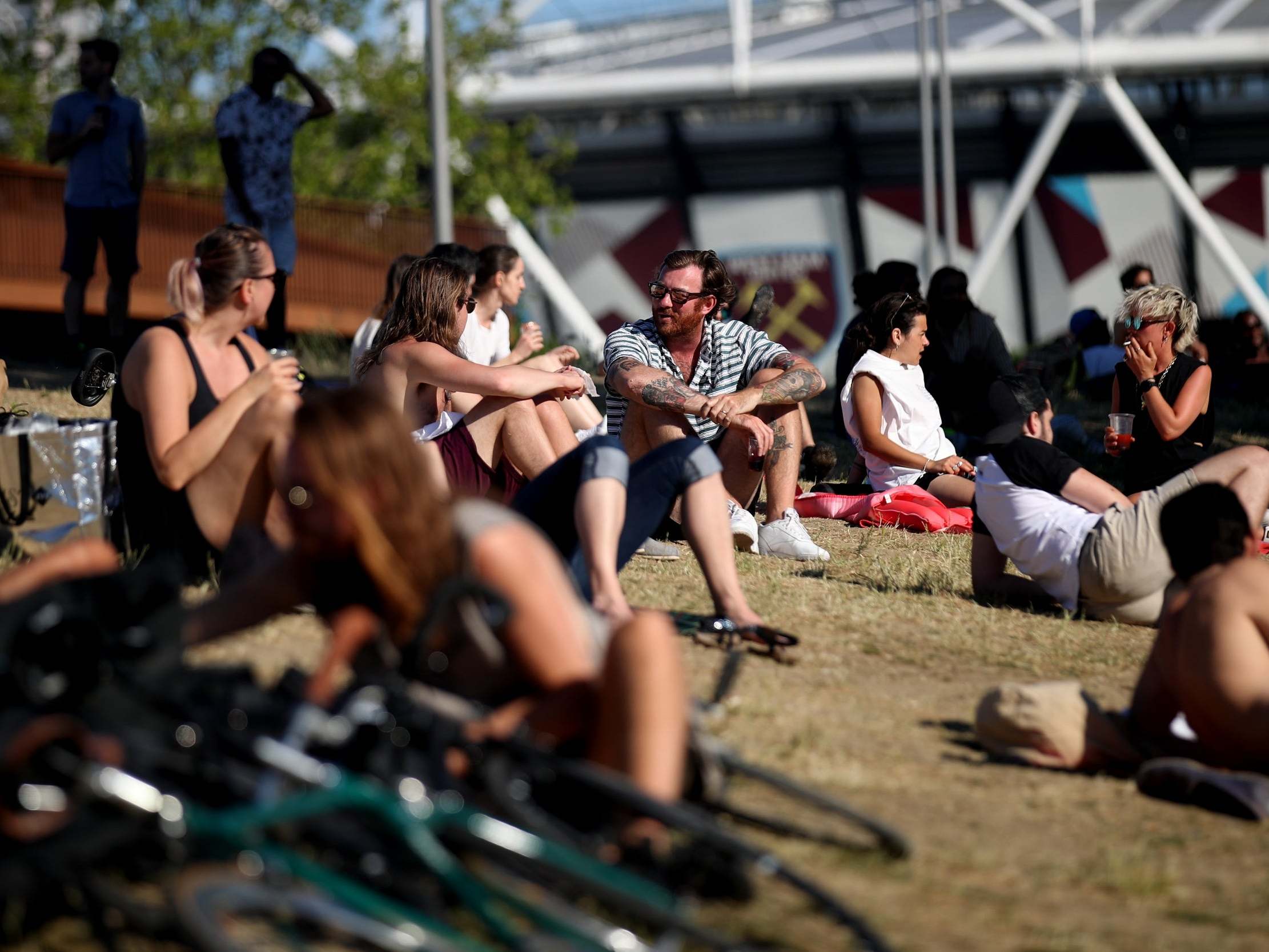This website uses cookies so that we can provide you with the best user experience possible. Cookie information is stored in your browser and performs functions such as recognising you when you return to our website and helping our team to understand which sections of the website you find most interesting and useful.

Once again, England is divided into two nations. First Brexit and now our approach to lockdown easing: the half that spent the sunny weekend breaking guidelines to gather in large groups, play contact sports, share picnic food and sit closer together than they ever appeared to before the global pandemic (as it happens, the entirety of this group seems to have been on Clapham Common on Sunday, by the looks of pictures on Twitter). The other half, meanwhile, continues to cautiously dodge strangers on their daily walks, carrying yard sticks to ensure social distancing and have enough hand sanitiser on their person to disinfect an abattoir or crime scene.
The feeling that we were, to some extent “all in this together” served, for a while, as a comfort blanket of sorts, telling us exactly where to tread to remain safe; what to do to ensure we could limit the spread of the virus; how to contribute to protect the NHS and save lives – it also gave us a false sense of security.
We were, of course, never all in this together. Single parents who had to stay home and care for children while they themselves were sick felt angry at Dominic Cummings’s apparent ability to circumvent rules; black families who are four times more likely to die from the virus did not feel they were weathering the storm with white people; women shut in with their abusive partners were not saving their own lives while they stayed home, and big families squeezed into tiny flats watched on as neighbours following rules basked in the sun of their south-facing gardens.
But for 10 weeks, there was one clear rule: stay at home, protect the NHS and save lives, and we thought that if we followed it, the R number would go down, the death rate would reduce, and we would overcome this eventually. Or so we hoped. England and Wales have now recorded over 40,000 coronavirus deaths, the R number remains close to 1 and test and trace systems and antibody tests continue to be delayed and fudged.
So, naturally, it came as a surprise to many when the government eased lockdown guidance far more extensively than people were expecting last Thursday, now allowing people to gather in groups of six and go into each other’s gardens for barbecues. On Sunday, further easing was announced for 2.2 million people in the most vulnerable group; those who had initially been told to shield and remain at home until 30 June could now go out and about and see friends at a social distance.
Curiously, meeting in your friend’s garden (many of which can only be accessed by walking through the house itself) is permitted despite gathering in the house itself now being illegal. Such seemingly contradictory guidance did not appear to have the blessing of scientific advisors within Sage, who warned that as the daily number of infections remains around 8,000, it is premature to lift lockdown.
Cynics suggested that the timing of the newly introduced set of rules, the successful following of which appears akin to attempting Catherine Zeta-Jones’s acrobatic navigation of security lasers in Entrapment, was a slapdash decision to ease national tension made in the wake of Barnard-Castle-gate.
The easing didn’t even appear to be in line with the government’s own Covid Alert System. Currently at level four, characterised by “a Covid-19 epidemic is in general circulation; transmission is high or rising exponentially”, it’s difficult to see easing measures as being in line with its own criteria, it looks more like giving up and offering sweets to disgruntled and frustrated children.
Following the easing of the shielding guidance, charities responded by describing it as an “utter mess”, with many in the vulnerable group saying they planned to remain at home, and many non-shielders deciding to do the same.
There’s a great deal tied up in people’s decision to either enjoy the easing or to decide to stay home, from people’s social situation to their health requirements and employment status. These are very personal decisions and sensitivity and understanding is vital.
I have two autoimmune conditions and am continuing to only see one person from a social distance until we know more about how the easing has impacted the rate of infection. I spoke to several people for a feature who felt the same, opting to stick to tighter lockdown rules than the government allows, for fear for their own health and a widely feared second spike.
For some, having been told to stay home and remain safe for two months has become so ingrained that the idea of it being safe outside feels absurd – like learning to take our first steps, we must now navigate the world without protection.
Does it come down to the risk-averse versus the freewheelers? Is it those with blind faith in the government versus the cynics? Or is it people who are just done with all of it and don’t see a way out? Ultimately, whatever people’s motive, it appears most of us are marching to the beat of our own lockdown drum and if that doesn’t point to a lack of trust in the government’s approach, I don’t know what does.



 Africana55 Radio
Africana55 Radio 

